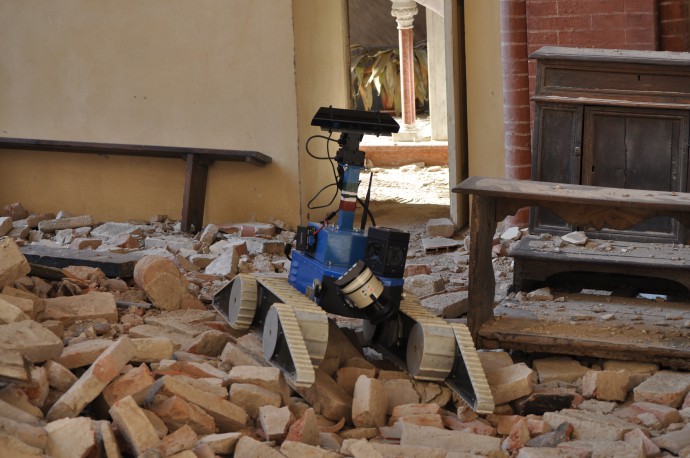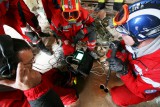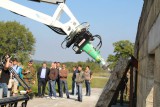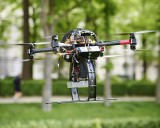The recognition of the European Commission to projects on Robotic research promotes successfully results
The European Commission funds more than 100 robotics research projects supported by around €600 million in the last five years. They address topics such as scene and situation understanding, perceiving the world through artificial senses (computer vision, haptics etc) and physical behaviour such as grasping objects or locomotion in everyday spaces. Europe's robotics industry is highly successful, accounting for about a quarter of the global production in industrial robotics and 50% market share in professional service robotics.
For this reason, the European Commission’s Directorate – General for Enterprise and Industry decided to fund the ICARUS Project (Integrated Components for Assisted Rescue and Unmanned Search Operations), a Research project with a budget of 17.5 M€, which deals with the development of a set of integrated components to assist search and rescue teams in dealing with the difficult and dangerous, but life-saving task of finding human survivors.
Another result of the investment of the European Commission in these initiatives came with the project NIFTi. In late July, this EU-funded project deployed a team of flying and ground-based robots in Mirandola, Emilia-Romagna, Italy, upon the official request by the Vigili del Fuoco, the Italian national rescue organization in charge of disaster response and recovery.
The NIFTi team was tasked to assess the damage to local churches only 20 kilometres away from the epicentre of the series of earthquakes that hit the region in May and June 2012.
When the NIFTi team started their mission, the inner city of Mirandola was still sealed off by the military and nobody could access the area without authorisation. The conditions were very dangerous, and two fire fighters had been killed there before by a collapsing roof.
The robots entered badly damaged buildings, scanned the area and produced 3D map reconstructions and high-resolution videos to report on structural damage to ceilings, arches and aisles in the largely destroyed churches, which date back to the 13th and 15th centuries, and on the state of cultural artefacts such as paintings, decorations, tombs and altars.
The team of robots and people had to work in harsh conditions, with no electricity, using a power generator, and flying the aerial robots in the dust, with almost no visibility, in temperatures of 36–40 C. The ground robots were hindered by piles of rubble.
NIFTi deployed a team of seven people, two tracked ground robots and two microcopters. The NIFTi team received essential support from members of the Vigili del Fuoco.
Five microcopter missions were flown at the Chiesa di San Francesco d’Assisi and four at the Duomo in Mirandola. The ground robot entered the Chiesa di San Francesco d'Assisi twice, to provide video and a 3D reconstruction of the western gallery. It also ran several missions in the Duomo (two in the eastern aisle and one at the top of the western aisle).
The ground robot was operated by a five-person team from a remote command post, involving a pilot, mission specialists, and an in-field observer. At the Duomo the microcopter's tasks included flying over the inaccessible main aisle.
All the robots used during the mission were developed by the NIFTi project. It is a concrete example of human-robot teamwork in complex deployments.
The assessment team was co-led by DFKI (Saarbrücken) and the University La Sapienza (Rome), with the support of the Italian Ministry of Culture.
Background
NIFTi is funded by the European Union through its Cognitive Systems & Advanced Robotics unit. The project is coordinated by DFKI (Saarbrücken, Germany). The consortium consists of DFKI, TNO (NL), Czech Technical University (CZ), Fraunhofer IAIS (D), BlueBotics (CH), ETH Zürich (CH), Roma La Sapienza (I), the Fire Department of Dortmund (D), and Vigili del Fuoco (I).
Source: European Commission
Picture: NIFTi project
- Login to post comments














